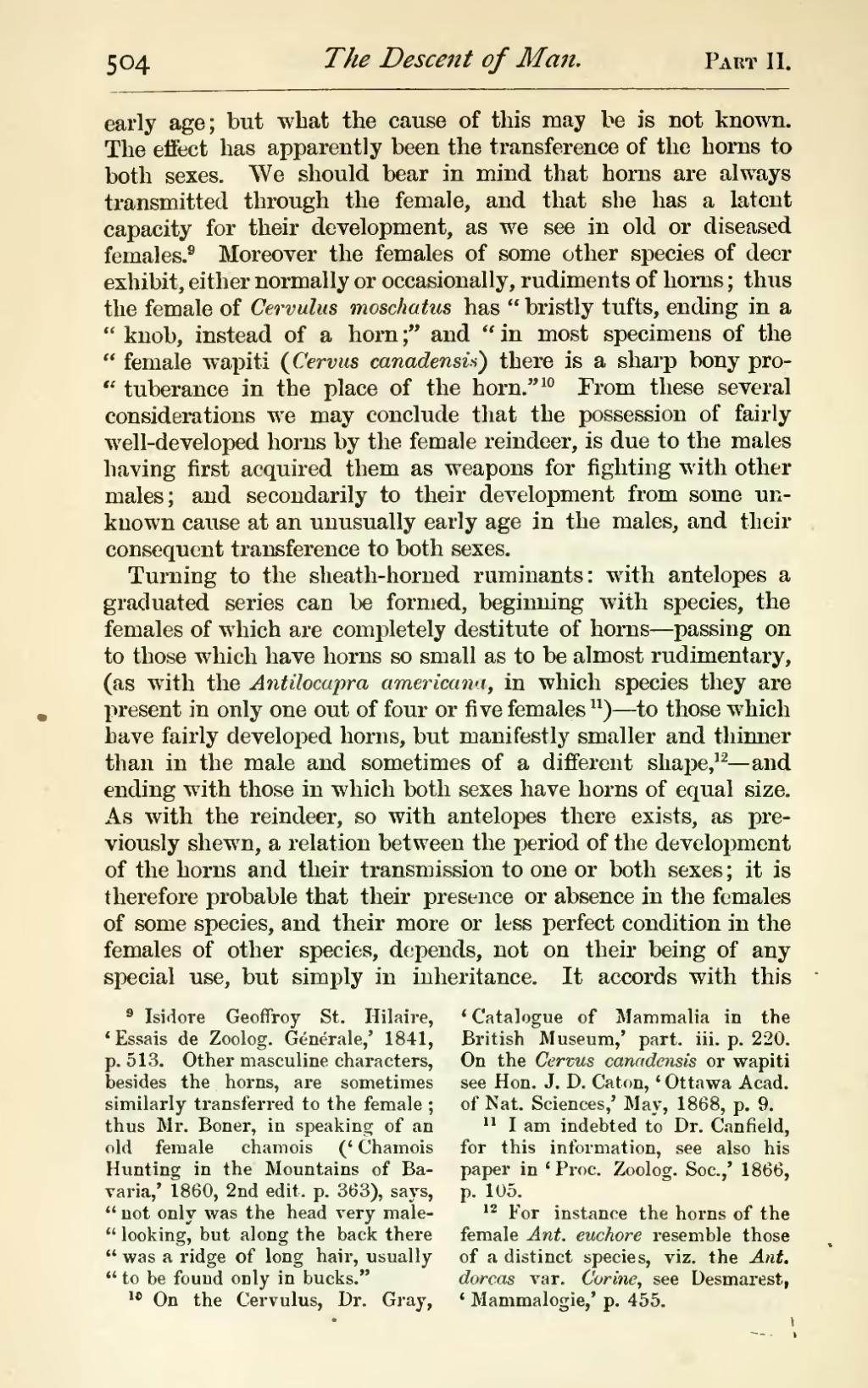early age; but what the cause of this may be is not known. The effect has apparently been the transference of the horns to both sexes. We should bear in mind that horns are always transmitted through the female, and that she has a latent capacity for their development, as we see in old or diseased females.[1] Moreover the females of some other species of deer exhibit, either normally or occasionally, rudiments of horns; thus the female of Cervulus moschatus has "bristly tufts, ending in a knob, instead of a horn;" and "in most specimens of the female wapiti (Cervus canadensis) there is a sharp bony protuberance in the place of the horn."[2] From these several considerations we may conclude that the possession of fairly well-developed horns by the female reindeer, is due to the males having first acquired them as weapons for fighting with other males; and secondarily to their development from some unknown cause at an unusually early age in the males, and their consequent transference to both sexes.
Turning to the sheath-horned ruminants: with antelopes a graduated series can be formed, beginning with species, the females of which are completely destitute of horns—passing on to those which have horns so small as to be almost rudimentary, (as with the Antilocapra americana, in which species they are present in only one out of four or five females[3])—to those which have fairly developed horns, but manifestly smaller and thinner than in the male and sometimes of a different shape,[4]—and ending with those in which both sexes have horns of equal size. As with the reindeer, so with antelopes there exists, as previously shewn, a relation between the period of the development of the horns and their transmission to one or both sexes; it is therefore probable that their presence or absence in the females of some species, and their more or less perfect condition in the females of other species, depends, not on their being of any special use, but simply in inheritance. It accords with this
- ↑ Isidore Geoffroy St. Hilaire, 'Essais de Zoolog. Générale,' 1841, p. 513. Other masculine characters, besides the horns, are sometimes similarly transferred to the female; thus Mr. Boner, in speaking of an old female chamois ('Chamois Hunting in the Mountains of Bavaria,' 1860, 2nd edit. p. 363), says, "not only was the head very male-looking, but along the back there was a ridge of long hair, usually to be found only in bucks."
- ↑ On the Cervulus, Dr. Gray, 'Catalogue of Mammalia in the British Museum,' part. iii. p. 220. On the Cervus canadensis or wapiti see Hon. J. D. Caton, 'Ottawa Acad, of Nat. Sciences,' May, 1868, p. 9.
- ↑ I am indebted to Dr. Canfield, for this information, see also his paper in 'Proc. Zoolog. Soc.,' 1866, p. 105.
- ↑ For instance the horns of the female Ant. euchore resemble those of a distinct species, viz. the Ant. dorcas var. Corine, see Desmarest, 'Mammalogie,' p. 455.
